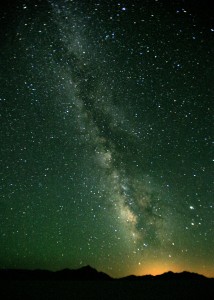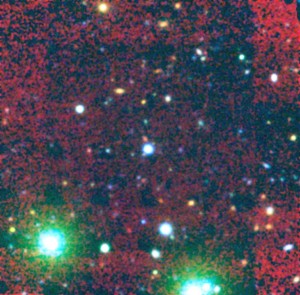Posted January 9th, 2013 at 6:29 pm (UTC+0)

One out of every six stars in our Milky Way galaxy has an Earth-like planet orbiting it, according to two new studies. (Photo: Steve Jurvetson via Wikimedia Commons)
There are at least 17 billion Earth-sized worlds in our Milky Way galaxy, according to two new studies.
Both groups of scientists used data from NASA’s Kepler mission to reach their conclusions, which were presented to the American Astronomical Society in Long Beach, California.
The scientists found that the closer the planets are to their stars, the easier they are to find because they transit more frequently, giving scientists more opportunities to observe them.
One group, led by Francois Fressin of the Harvard-Smithsonian Center for Astrophysics (CfA), said its studies show 50 percent of stars in our galaxy have a planet the size of Earth or larger closely orbiting them.
Add in larger planets, which have been found to be in wider orbits around its star, and the percentage of stars with planets goes up to 70 percent, according to the researchers.
Based on current ongoing observations from the Kepler mission, along with others using different detection techniques, it looks like practically all Sun-like stars have planets, according to the Harvard-Smithsonian team.
A second group of researchers, from the University of California, Berkeley and the University of Hawaii at Manoa, found smaller exoplanets to be much more plentiful than larger ones in the star systems it observed. The analysis also confirmed that the frequency of planets increased as its size decreased, which team member Andrew Howard and the Kepler team reported last year.
Perhaps one percent of stars have planets the size of Jupiter, while 10 percent have planets the size of Neptune, according to the Berkeley/ Hawaii team. The group’s research also shows the exoplanets they observed, which were two or three times the diameter of Earth, are typically more like our solar system’s Uranus and Neptune, each of which has a rocky core surrounded by helium and hydrogen gases and, perhaps, water.

Artist’s conception of the wide variety of planets detected by NASA’s Kepler spacecraft. (C. Pulliam & D. Aguilar/CfA)
They suggest planets orbiting close to their stars may even be water worlds, with oceans hundreds of kilometers deep, surrounding a rocky core.
Although the planets between one to two times larger than Earth may not necessarily be habitable, the Berkeley/Hawaii team said those planets might be rocky and, if they’re located within what they call the “Goldilocks zone” –not too hot, not too cold, just right for liquid water– could support life.
The Harvard-Smithsonian researchers found that, except for the gas giants, the type of star didn’t really have much effect on the size of its planets, contradicting previous findings. Neptune-type planets, they said, can be found just as frequently orbiting around relatively cool stars, called red dwarfs, as they are around sun-like stars. The same is true for smaller worlds.
“Earths and super-Earths aren’t picky,” said Guillermo Torres of the Harvard-Smithsonian team. “We’re finding them in all kinds of neighborhoods.”
As more data is gathered, more planets in larger orbits will be revealed, according to the Harvard-Smithsonian researchers. They say when Kepler’s mission is extended, astronomers should be able to spot Earth-sized planets at greater distances, including those with Earth-like orbits within the habitable zone.

























 Science World is VOA’s on-air and online magazine covering science, health, technology and the environment.
Science World is VOA’s on-air and online magazine covering science, health, technology and the environment.